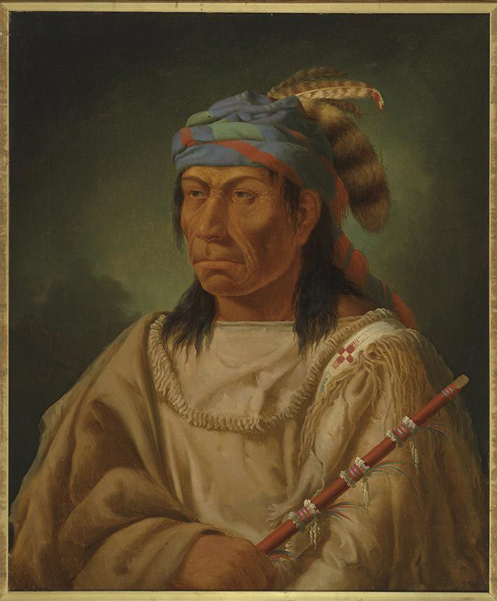“Peo-peo-mox-mox”
by Paul Kane (1810–1871)
Portrait of Piupiumaksmaks, Walla Walla (1849—1856). Oil on canvas, 76.3 x 63.7 centimeters. Courtesy Royal Ontario Museum, https://rom.on.ca.
In late July 1849, Peopeomoxmox returned to the mouth of the Walla Walla with a war party that had lasted eighteen months. Their purpose was to avenge the death of his son at the hands of American settlers at Sutter’s Mill in 1844. Several of the party died from measles and thus weakened, unable to fulfill their mission.[1]Charles Wilkes, The Narrative of the United States Exploring Expedition During the Years [1838–1842] (Philadelphia: Lea and Blanchard, 1845), 4:281–284; Robert H. Ruby, John A. Brown, and Cary C. … Continue reading
Walla Wallas, sometimes Waluulapam and sometimes on this site as Walula, are a Sahaptin-speaking indigenous people that lived primarily along their namesake river. There has been disagreement among historians regarding the nation’s etymology. Stern suggests that it is a diminished form of the Sahaptin wana ‘river’. Wallula or Walula, walúula was their primary settlement just above the mouth of the Walla Walla.
Walla Walla came to be applied by whites to other nations such as the Umatillas. In late 1949, the Umatillas, Cayuses, and Walla Wallas officially became The Confederated Tribes of the Umatilla Indian Reservation, an alliance based their 1855 namesake treaty with Isaac Stevens.[2]Theodore Stern, Handbook of North American Indians: Plateau Vol. 12, ed. Deward E. Walker, Jr. (Washington, D.C.: Smithsonian Institution, 1998), 419.
Selected Encounters
Flag Presentations
by Joseph A. Mussulman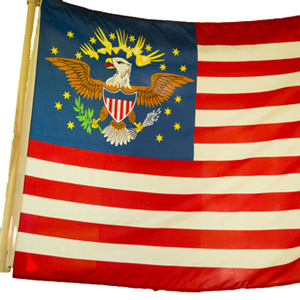

Lewis and Clark usually distributed flags at councils with the chiefs and headmen of the tribes they encountered—one flag for each tribe or independent band.
October 16, 1805
A musical welcome
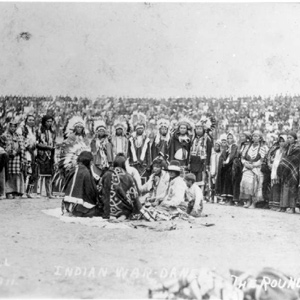

Snake and Columbia rivers, WA The paddlers negotiate the last of the Snake River rapids and arrive at the Columbia River where they are given a musical welcome from a large group of Yakamas and Wanapums. They give the Indians tobacco, peace medals, and other gifts.
October 18, 1805
Down the Columbia
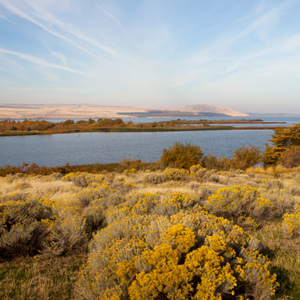

Wallula Gap, WA The captains council with the Wanapums and Yakamas and records Sahaptian vocabularies. Clark measures the widths of the Snake and Columbia rivers. Late in the day, the expedition heads down the Columbia.
October 19, 1805
The Walla Walla and Umatillas
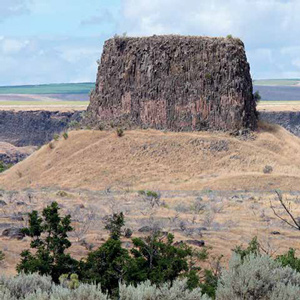

Boardman, OR Before departure, the captains hold a council with Walla Walla Chief Yellepit. After passing through the Wallula Gap, Clark frightens several Umatilla Indians and works to gain their trust. The day ends with mutual smoking and fiddle music.
April 26, 1806
A crowded, dusty trail
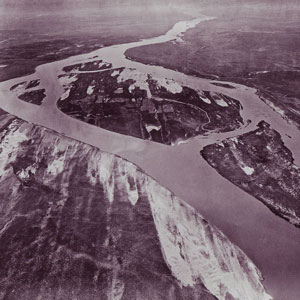

The Corps continues along the north shore of the Columbia River reaching the low plains near present Plymouth, Washington. A young boy catches several Columbia River chub, a species new to science.
April 27, 1806
Yelleppit's village
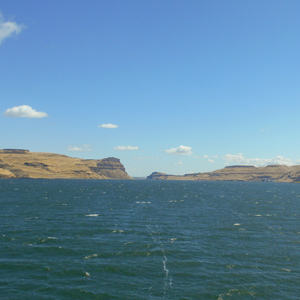
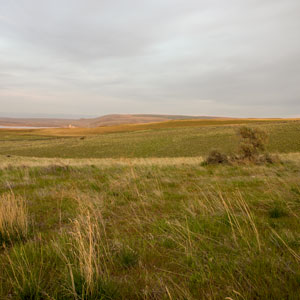
The expedition passes the Umatilla River and then climbs to the high plain above the Wallula Gap. Late in the day, they are met by Chief Yelleppit and guided to his village opposite the Walla Walla River.
April 28, 1806
Yelleppit brings a horse
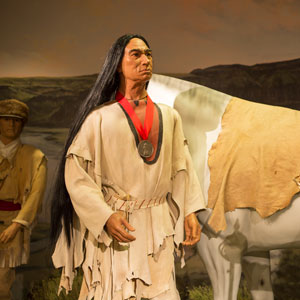

Across from the Walla Walla River, talks begin with Sacagawea and Charbonneau as interpreters. Yelleppit brings Clark a horse, Clark gives medical aid, and Pvt. Frazer buys ten fat dogs for consumption.
April 29, 1806
Crossing the Columbia
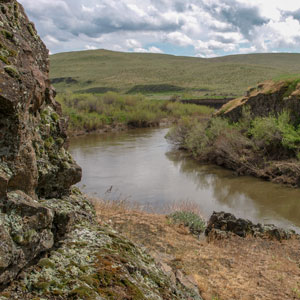

The expedition crosses the Columbia, a process that takes most of the day. Gifts are exchanged with two chiefs and Clark gives medical aide to many. Camp is a short distance up the Walla Walla River.
May 1, 1806
Pursuing the Travois Road
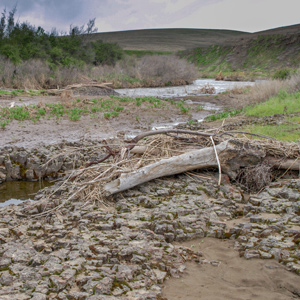

The corps’ Indian companions argue about which trail to take, and three honest Walla Wallas return a steel beaver trap. After 26 miles, they camp on the Touchet River near present Waitsburg, Washington.
June 23, 1806
Three Nez Perce guides
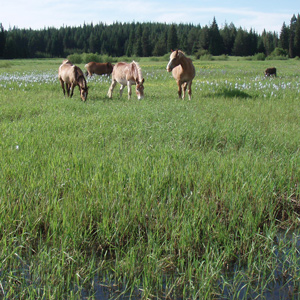

While waiting at Weippe Prairie for mountain snow to melt, the hunters imitate bleating fawns to call in the does. Three Nez Perce guides arrive, and all is made ready to cross the Bitterroot Mountains.
Notes
| ↑1 | Charles Wilkes, The Narrative of the United States Exploring Expedition During the Years [1838–1842] (Philadelphia: Lea and Blanchard, 1845), 4:281–284; Robert H. Ruby, John A. Brown, and Cary C. Collins, A Guide to the Indian Tribes of the Pacific Northwest (Norman: University of Oklahoma Press, 2010), 371. |
|---|---|
| ↑2 | Theodore Stern, Handbook of North American Indians: Plateau Vol. 12, ed. Deward E. Walker, Jr. (Washington, D.C.: Smithsonian Institution, 1998), 419. |
